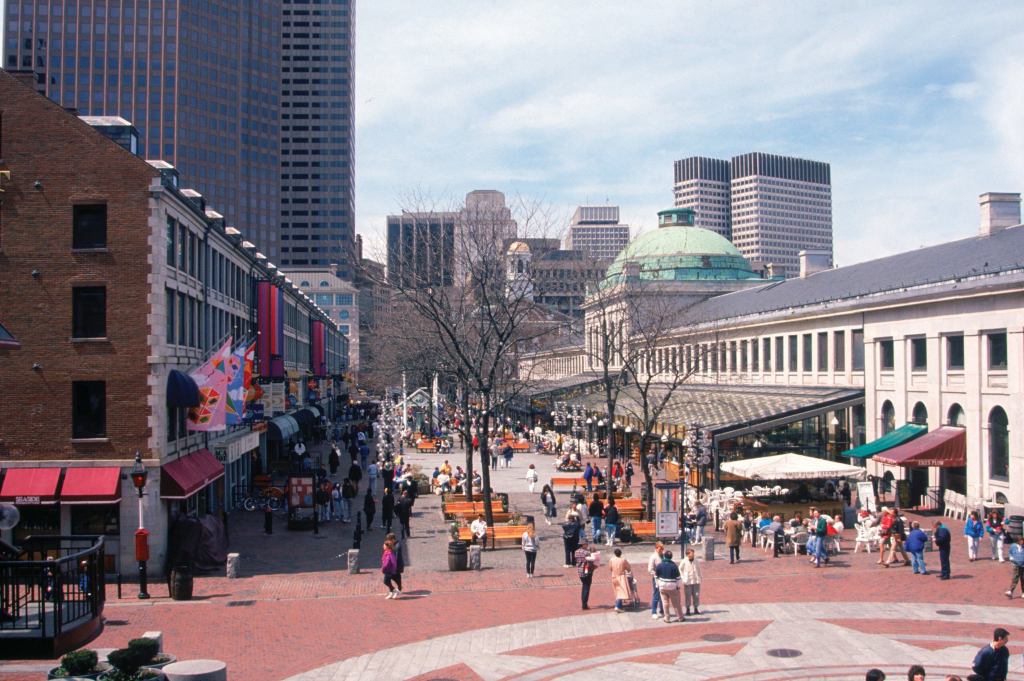When the 1975 P/A Awards jurors honored the Faneuil Hall Marketplace proposal, they couldn’t have realized how successful the project would be. Completed in 1978, the complex has been a linchpin of downtown Boston activity, attracting some 12 million visits annually. And this year it won the AIA’s 25-Year Award, bestowed for the first time ever on a reuse project.
The original buildings adapted for this marketplace were in their own right an audacious urban development in 1825. The central market hall and two parallel rows of commercial loft structures all extend over 500 feet, with massive walls of cut granite. By the mid-1960s, the food wholesalers who long occupied these halls had moved out. The city acquired the complex and restored the exteriors, but for years the buildings stood empty.
Architect Benjamin Thompson worked with Boston officials to establish a design concept and a program of food stalls, shops, and restaurants. Then he played a key role in recruiting James Rouse as the developer. Once success at Faneuil Hall was apparent, Thompson and Rouse went on to collaborate on marketplace developments in Baltimore, Miami, and New York.
Thompson’s major architectural move was to add glazed lean-tos to either side of the central structure, echoing the forms of the metal sheds that once clung to its flanks. The reuse plans also involved sensitive design of the project’s pedestrian streets, its graphics, and—above all—its management policies. Generations of Bostonians and tourists have mingled in the resulting lively environment. ?
